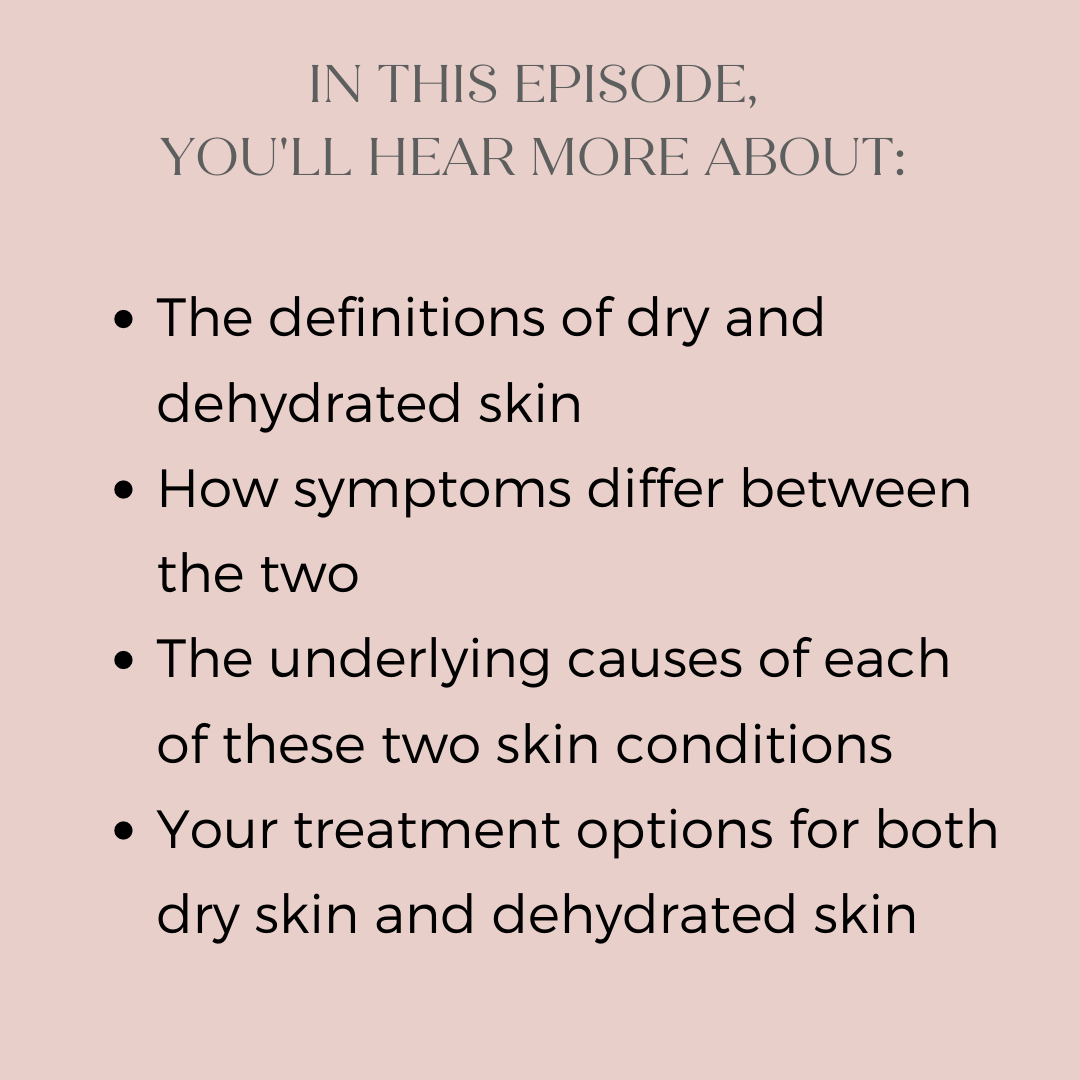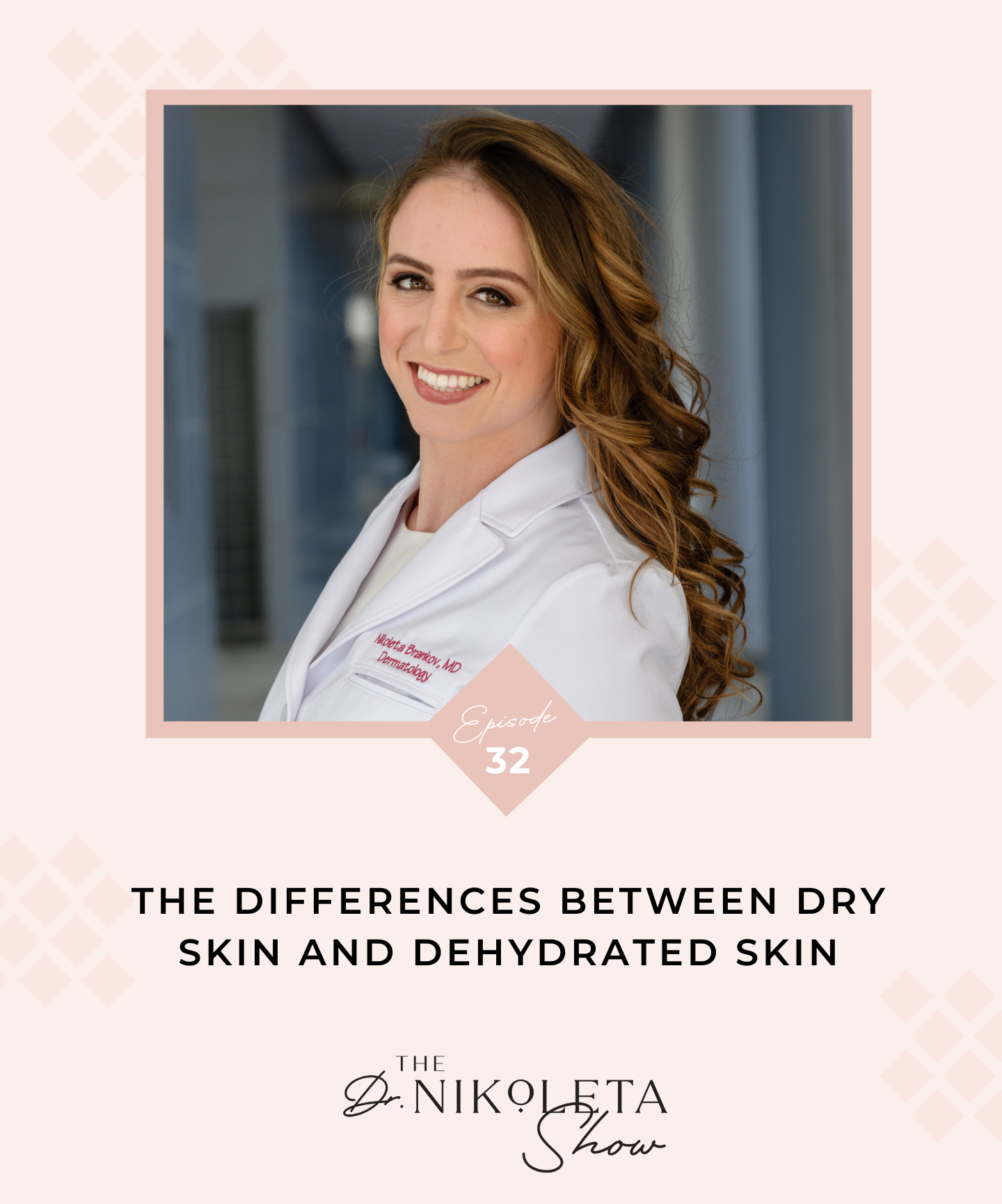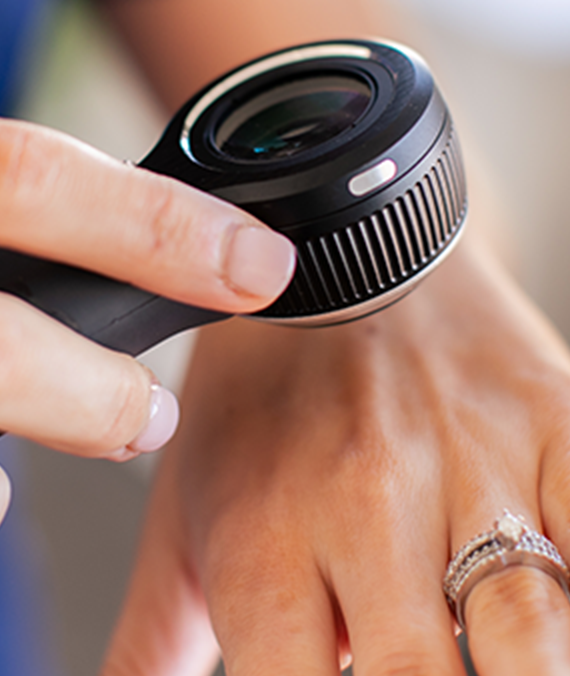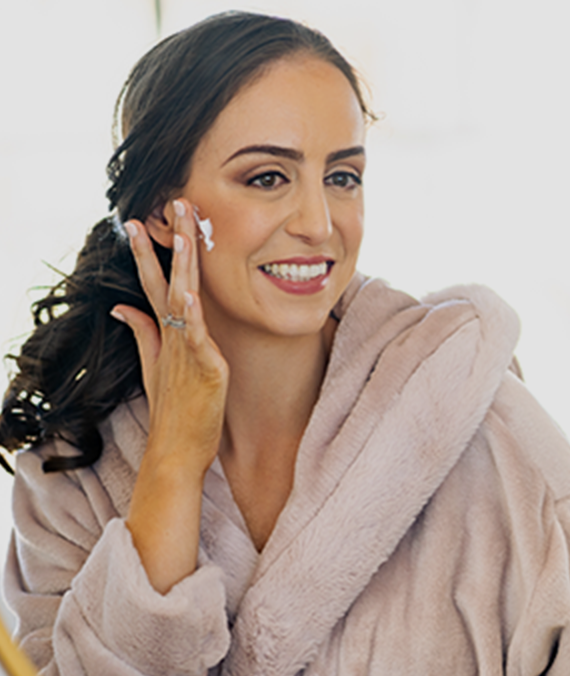Hello, tribe! I hope you all are having a great day today! We didn’t have any podcast episodes last week because there was a loss of power in the Texas area because of winter storms. It was absolutely crazy — pipes burst, houses were flooded, and some people are still without running water in their homes.
If you were affected by the Texas freeze (or these winter storms in any other area), then my thoughts and prayers go out to you! Please stay safe and warm wherever you’re located!
In Texas, we don’t get too much cold weather, especially snow and ice storms, but all this got me thinking about skincare issues that we encounter during the wintertime. If you haven’t already, please go back and listen to my episode about the top tips for taking care of your skin during the winter (or you can read the blog post here).
But today, I’ll be discussing a very common misconception in skincare — the difference between dry skin and dehydrated skin. In the winter, you may notice your lips cracking more frequently and other parts of your skin feeling dry. Does this mean you have dry skin? Or is your skin just dehydrated? Is there a difference between the two? And how do you treat them?
Those are all valid questions, and I’m happy to provide the answers! In this episode, I compare the two terms (dry skin and dehydrated skin) in four different ways. First, we’ll talk about what each term means. Second, we’ll discuss the symptoms of each. Third, we’ll investigate the causes of dry skin vs. dehydrated skin. And lastly, I’ll give some treatment options for both!
Dry skin and dehydrated skin may sound like the same thing, but they’re not! They are very different, and understanding the difference will empower you to better take care of your skin. Let’s get into it!
#1: What Is Dry Skin vs. Dehydrated Skin?
First of all, what do “dry skin” and “dehydrated skin” actually mean? Let’s start with dry skin…
If you remember from Episode #26 on how to determine your skin type, you’ll recall that dry skin is actually a skin type! Dry skin is flaky and can feel itchy or rough in texture, and it feels like this year-round. If you have dry skin, you have a lack of oil and lipid production in your skin.
On the other hand, dehydrated skin is just a temporary status due to the loss of water from the top layer of your skin called the epidermis. Dehydrated skin is a condition that any skin type can experience — even oily skin! We experience dehydrated skin through “increased transepidermal water loss,” which means that the skin barrier is impaired, losing water across the top layer of your skin (the epidermis).
So, to summarize, dry skin is a skin type that lacks oil and lipid production, while dehydrated skin is a temporary condition due to a loss of water in your epidermis.
#2: What Are the Symptoms of Dry Skin vs. Dehydrated Skin?
Now, how do dry skin and dehydrated skin manifest themselves in symptoms?
If you have dry skin, you obviously have skin that feels dry. It’s flaky, itchy, and maybe even scaly. Dry skin is also prone to being more inflamed than other skin types, and it’s prone to developing eczema as well.
Dehydrated skin feels tight and has a very rough texture (you can see how it’s easy to confuse it with dry skin!). It typically has a dull appearance, and you may see accentuation of fine lines and wrinkles in dehydrated skin.
The main difference between these two symptoms is that dry skin will feel flaky and itchy while dehydrated skin will feel uncomfortably tight.

#3: What Are the Causes of Dry Skin vs. Dehydrated Skin?
So, what exactly are the causes of dry skin vs. dehydrated skin? We touched on this in the first section, but basically, if you have dry skin, there’s a decrease in lipid fat production and in the number of oil glands you have on your skin. Remember — dry skin is a skin-type, not a temporary condition (although you can use products to treat symptoms which we will touch on in the next section). As a skin type, dry skin runs in families, so if you’ve been experiencing those dry skin symptoms for a while, it was most likely passed down to you.
Different from dry skin, dehydrated skin could have a number of causes. The cause could be a harsh cleaning regimen, excessive sun and heat exposure, excessive washing with hot water, or just general aging and stress. You could get dehydrated skin from applying a benzoyl peroxide mask for WAY too long on your face. You also could get dehydrated skin from overusing an astringent toner. (For more about toners, listen to Episode #30 about whether or not you need to break up with your toner.)
Tribe, remember that the “tight” feeling is not what you want. It is not healthy for your skin, and it won’t reduce the number of wrinkles or fine lines on your face. In fact, it will only make them worse!
Instead, trade those astringent toners out for products that will actually help treat your dry skin type or dehydrated skin condition…
#4: What Are the Treatments for Dry Skin vs. Dehydrated Skin?
As with most skin types and conditions, treatment can be complicated, but when you break it down, it’s quite easy to understand!
For dry skin, first you’ll want to review Episode #26 where I list several of my recommended products for someone with a dry skin type. In general, you want to use a gentle cleanser with thick emollients and a moisturizer that contains lipids (look for the buzzword “ceramide,” which I’ll discuss in a future episode.) You should also try to use ointments that contain petrolatum (this helps dehydrated skin heal as well by retaining water in the epidermis) and treat your skin with humectants, which help draw more water in, too.
For dehydrated skin, the treatment process is actually pretty similar! First, you want to make sure that you are using a humectant to draw water into your epidermis so that your skin can become hydrated. If you have an oily or combination skin type, make sure to stick to a lighter humectant formulation.
In addition, you need to wear sunscreen daily (I recommend this for everybody, whether or not they have dehydrated skin), and you need to stay hydrated by drinking plenty of water. To treat the dullness caused by dehydrated skin, you can use mild products that contain ingredients such as alpha-hydroxy acids, which help to exfoliate your skin and exchange dullness for brightness!
Let’s sum that up! For dry skin, use gentle cleansers with thick emollients, a moisturizer that contains ceramide, petroleum ointment, and humectants. For dehydrated skin, you can use petroleum ointment, humectant formulations (strength depending on your skin type), sunscreen to prevent further damage, and mild products that contain alpha-hydroxy acids. Lastly, don’t forget to drink plenty of water!
Don’t Settle for Dry or Dehydrated Skin
There you have it, tribe — the differences between dry skin and dehydrated skin and how you should treat each! In the wintertime, we can see an increase in symptoms for both dry skin and dehydrated skin conditions, so my hope is that this post is informative so that you can care for your skin in the best way possible and strive for mindful skincare.
Remember — you can worsen both dry skin and dehydrated skin by harsh cleaning, stress, not sleeping enough, washing with hot water for a long time, and not having a skincare success routine.
As always, wear sunscreen and drink water to keep your skin (and the rest of your body) hydrated and healthy! I also recommend eating a lot of plant-based meals — these beauty foods have lots of nourishing ingredients as well as water.
Tribe, I hope this guide to the differences between dry skin and dehydrated skin was helpful! As always, my mission is to give you reliable information about skincare and skin science that empowers you to achieve the skin of your dreams. I’m over here virtually loving your skin and cheering you on for reading another blog post from the podcast! You’re one step closer to defeating dehydrated skin and helping dry skin turn into the skin of your dreams!
If you enjoyed this episode, be sure to let me know on Instagram! Tag me, @drnikoleta, with a screenshot of the episode and your greatest takeaways. I’d also really appreciate it if you would subscribe and leave a five-star rating on Apple Podcasts — that helps us share the podcast with more wonderful women like you!
And if you’re looking for a community of like-minded individuals who prioritize skincare, self-care, and healthcare, check out the podcast Facebook Community. We’d love to have you join us!
I hope you all have an amazing rest of your week! Continue to get that glowing skin you deserve! Love your skin and Step Out with Confidence® every single day in your life! You got this!







Stay in the know
Dropping in with weekly self-love affirmations, inspo, and skin secrets from Dr. Nikoleta created with YOU in mind.